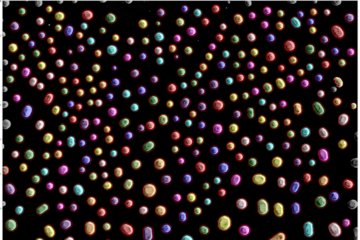All genres
21.
Journal Article
Phases and Phase Equilibria in the Fe–Al–Zr System. Zeitschrift für Metallkunde 95 (6), pp. 469 - 485 (2004)
22.
Journal Article
Iron-rich iron-aluminium-molybdenum alloys with strengthening intermetallic mu phase and R phase precipitates. Steel Research International 75 (1), pp. 62 - 73 (2004)
23.
Journal Article
Alloys based on Fe3Al or FeAl with strengthening Mo3Al precipitates. Intermetallics 12 (6), pp. 625 - 633 (2004)
24.
Journal Article
Deformation behaviour of iron-rich iron-aluminium alloys with ternary transition metal additions. Steel Research International 75, 5, pp. 339 - 342 (2004)
25.
Journal Article
Microstructure and deformation behaviour of iron-rich iron-aluminium alloys with ternary carbon and silicon additions. Steel Research International 75, 5, pp. 343 - 352 (2004)
26.
Journal Article
Iron-Rich Iron-Titanium-Silicon Alloys with Strengthening Intermetallic Laves Phase Precipitates. steel research international 75 (11), pp. 766 - 772 (2004)
27.
Journal Article
Deformation Behaviour and Oxidation Resistance of Single-Phase and Two-Phase L21 Fe–Al–Ti Alloys. Intermetallics 12 (12), pp. 1345 - 1359 (2004)
28.
Journal Article
Iron-aluminium-base alloys with strengthening Laves phase for structural applications at high temperatures. Materials Science Forum 475-479, pp. 865 - 868 (2004)
29.
Journal Article
Iron-Aluminium Alloys with Strengthening Carbides and Intermetallic Phases for High-Temperature Applications. Steel Research International 75, 1, pp. 55 - 61 (2004)
30.
Journal Article
Production scale processing of a new intermetallic NiAl-Ta-Cr alloy for high-temperature application: Part II. Powder metallurgical production of bolts by hot isostatic pressing. Journal of Materials Processing Technology 136 (1-3), pp. 114 - 119 (2003)
31.
Journal Article
Production-scale processing of a new intermetallic NiAl-Ta-Cr alloy for high-temperature application: Part I. Production of master alloy remelt ingots and investment casting of combustor liner model panels. Journal of Materials Processing Technology 136 (1-3), pp. 105 - 113 (2003)
32.
Journal Article
Constitution and microstructures of Fe–Al–M–C (M=Ti, V, Nb, Ta) alloys with carbides and Laves phase. Intermetallics 11 (5), pp. 443 - 450 (2003)
33.
Journal Article
Deformation behaviour of iron-rich iron-aluminium alloys at low temperatures. 10, pp. 2847 - 2857 (2003)
34.
Journal Article
Deformation behaviour of iron-rich iron-aluminium alloys at low temperatures. Acta Materialia 51, pp. 3233 - 3242 (2003)
35.
Journal Article
Phases and phase equilibria in the Al-rich part of the Al–Ti system above 900 °C. Intermetallics 10 (6), pp. 523 - 540 (2002)
36.
Journal Article
Intermetallic phases - Demands, problems and perspectives. Verhandlungen Deutsche Physikalische Gesellschaft 6 (37), p. 281 - 281 (2002)
37.
Journal Article
Intermetallic Laves phase compounds - Cubic vs. hexagonal crystal structure. Verhandl. DPG 6 (37), p. 282 - 282 (2002)
38.
Journal Article
Experimental Determination of Intermetallic Phases, Phase Equilibria, and Invariant Reaction Temperatures in the Fe–Zr System. Journal of Phase Equilibria 23 (6), pp. 480 - 494 (2002)
39.
Journal Article
Laves phases for high temperatures - Part II: Stability and mechanical properties. Intermetallics 10, pp. 497 - 510 (2002)
40.
Journal Article
Mikrostruktur und mechanische Eigenschaften von Fe–Al mit verstärkender Zr(Fe,Al)2-Phase. Verhandl. DPG 6 (37), p. 264 - 264 (2002)









